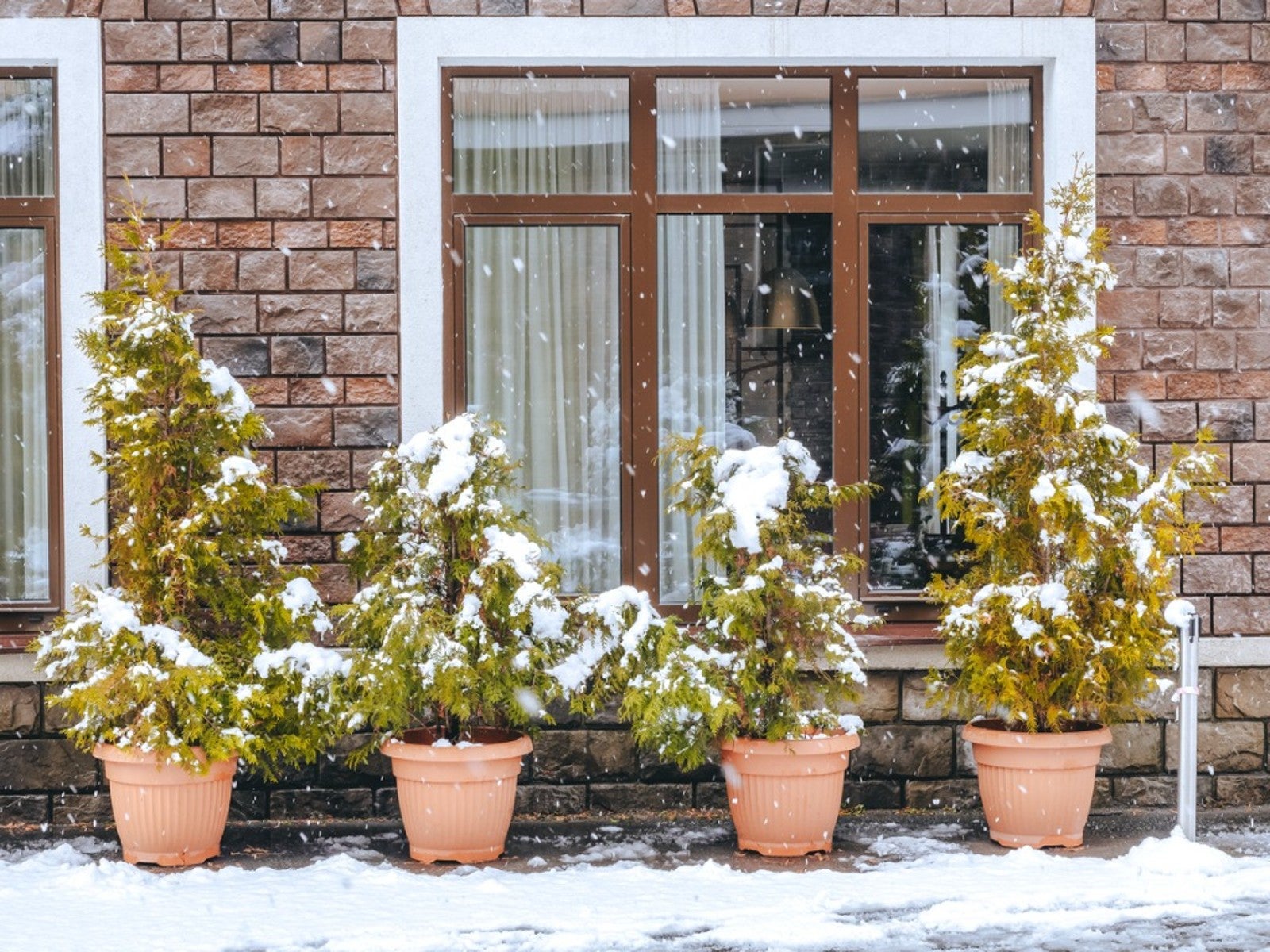How To Overwinter Potted Trees: Tips For Storing Potted Trees Over Winter


Planting smaller trees in containers solves many problems. If you have sand or clay soil that would not be good for the tree, you can use top notch, well-draining soil in the container. And if your winters are colder than your tree is hardy, potted evergreen trees winter over well if you can cart the container inside for the cold spells.
But potted trees that survive winter don’t necessarily need to be brought inside. In many areas, it’s entirely feasible to overwinter potted trees outside – including both potted evergreen trees and potted deciduous trees - if you take proper precautions. If you are interested in winter tree protection, read on.
Potted Trees That Survive Winter
Trees planted in pots feel the cold of winter more than trees with roots in the ground. That’s because they have less soil insulating their roots. As winter chill sets in, it may be essential to provide winter tree protection to help your tree survive.
This is obviously not necessary for potted trees in warmer climates. For example, in San Francisco, where winter temps stay double digits above freezing, container plants thrive in the back yard all year long without any added winter protection. In cooler regions, potted trees that survive winter are either cold hardy to the region or else are provided protection from cold and wind.
Protecting Container Trees
Picking trees that are cold hardy to your location is the first step in helping trees make it through the winter. Keep in mind, however, that hardiness zones reflect the level of cold a tree can survive when its roots are in the earth, not in a container. The roots of your container plants can become colder than those in the ground; in fact, they can drop down to the same temperature as the winter air.
How can you provide these plants with winter tree protection? First, calculate your container’s USDA hardiness zone as two zones colder than your regular zone. That should tell you if your tree is still safe. For example, if you live in Zone 6, choose perennials, trees, and shrubs marked hardy to Zone 4 to increase the chance that the plants will overwinter happily. You’ll also want to pick your containers carefully.
Picking Containers for Potted Trees
The type of container you use can have a big impact on how much cold the tree’s roots will experience. It just makes sense that thin container walls will not shield the cold as well as thicker ones. That eliminates plastic and metal containers for storing potted trees over winter.
Sign up for the Gardening Know How newsletter today and receive a free copy of our e-book "How to Grow Delicious Tomatoes".
But there’s more to consider if you have freezing winter weather. Earthenware, ceramic, and terracotta can crack as they freeze or thaw. It’s better to pick concrete or wood containers. And size counts. The bigger the container the better, since it increases the amount of protective dirt surrounding the roots.
Storing Potted Trees Over Winter
Obviously, moving container plants indoors for the coldest months is an effective way to protect them. But it’s not the only way to improve a container tree’s chances. Here’s another way of storing potted trees over winter.
Before the first winter frosts, dig large holes in the garden soil, big enough to accommodate the pots of your container trees. Place the plant’s container into the hole and tuck soil around the edges, water the plants well, then add a thick layer of straw, dried leaves or shredded bark. Water occasionally over the cold months.
If this isn’t possible, grouping your potted trees in a sheltered location near the house can help, too. Place the biggest pots on the outside, the smaller pots on the inside. Mulch over the top and place hay bales around the outside of the little grouping.

Teo Spengler is a master gardener and a docent at the San Francisco Botanical Garden, where she hosts public tours. She has studied horticulture and written about nature, trees, plants, and gardening for more than two decades, following a career as an attorney and legal writer. Her extended family includes some 30 houseplants and hundreds of outdoor plants, including 250 trees, which are her main passion. Spengler currently splits her life between San Francisco and the French Basque Country, though she was raised in Alaska, giving her experience of gardening in a range of climates.